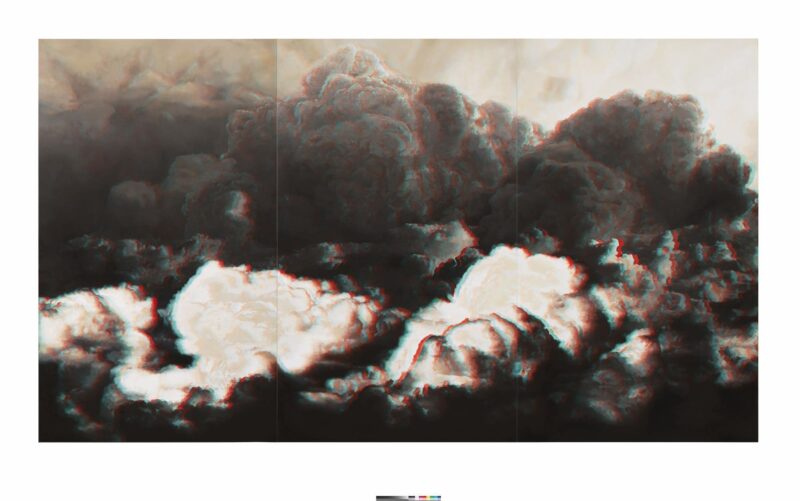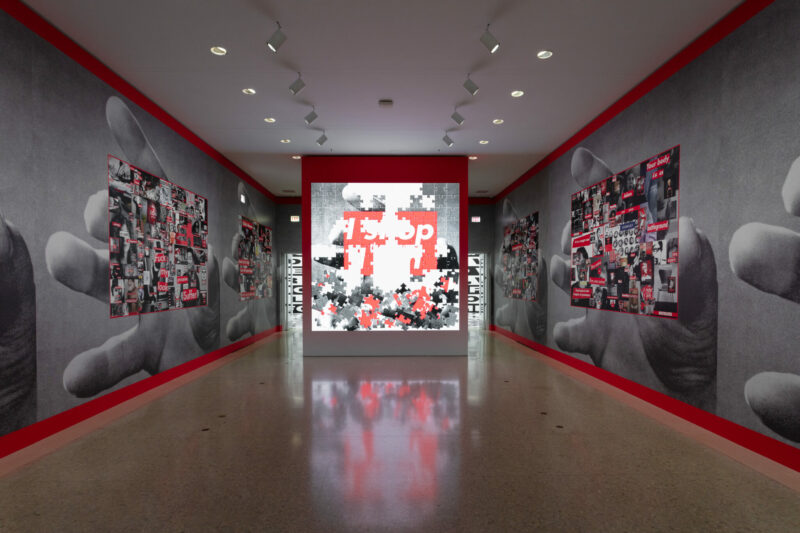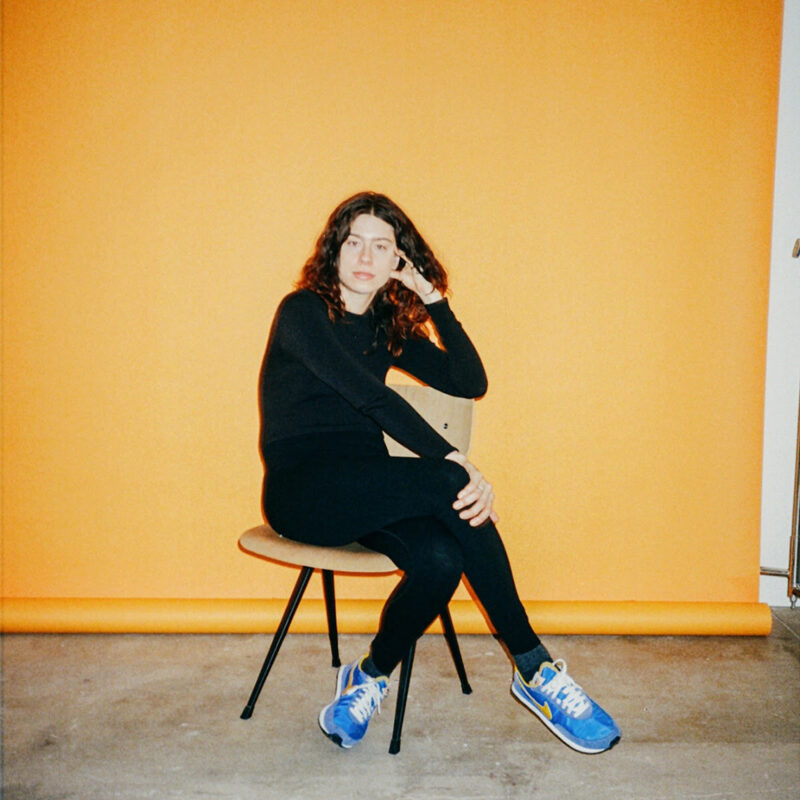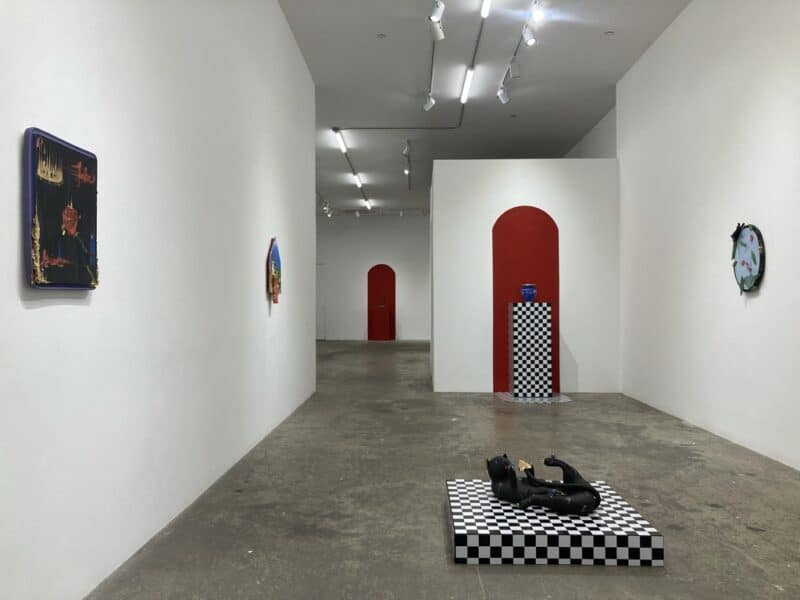Bringing together a group of outstanding female artists in an innovative and collaborative effort to support the next generation, Sprüth Magers has announced a benefit exhibition to raise funds for the non-profit organization Artadia.

Through grantmaking, community-building and advocacy, Artadia strengthens the invaluable role visual artists play in our society. The exhibition comprises influential contemporary voices across multiple generations, reflecting both the discourse on art, gender and power that is firmly embedded in Sprüth Magers’ history and its enduring support of pioneering female figures. Featured will be works by artists who are all part of the gallery’s dynamic roster, including Thea Djordjadze, Lucy Dodd, Karen Kilimnik, Barbara Kruger, Louise Lawler, Pamela Rosenkranz, Analia Saban and Rosemarie Trockel. All funds raised will go towards the impactful Artadia Awards program
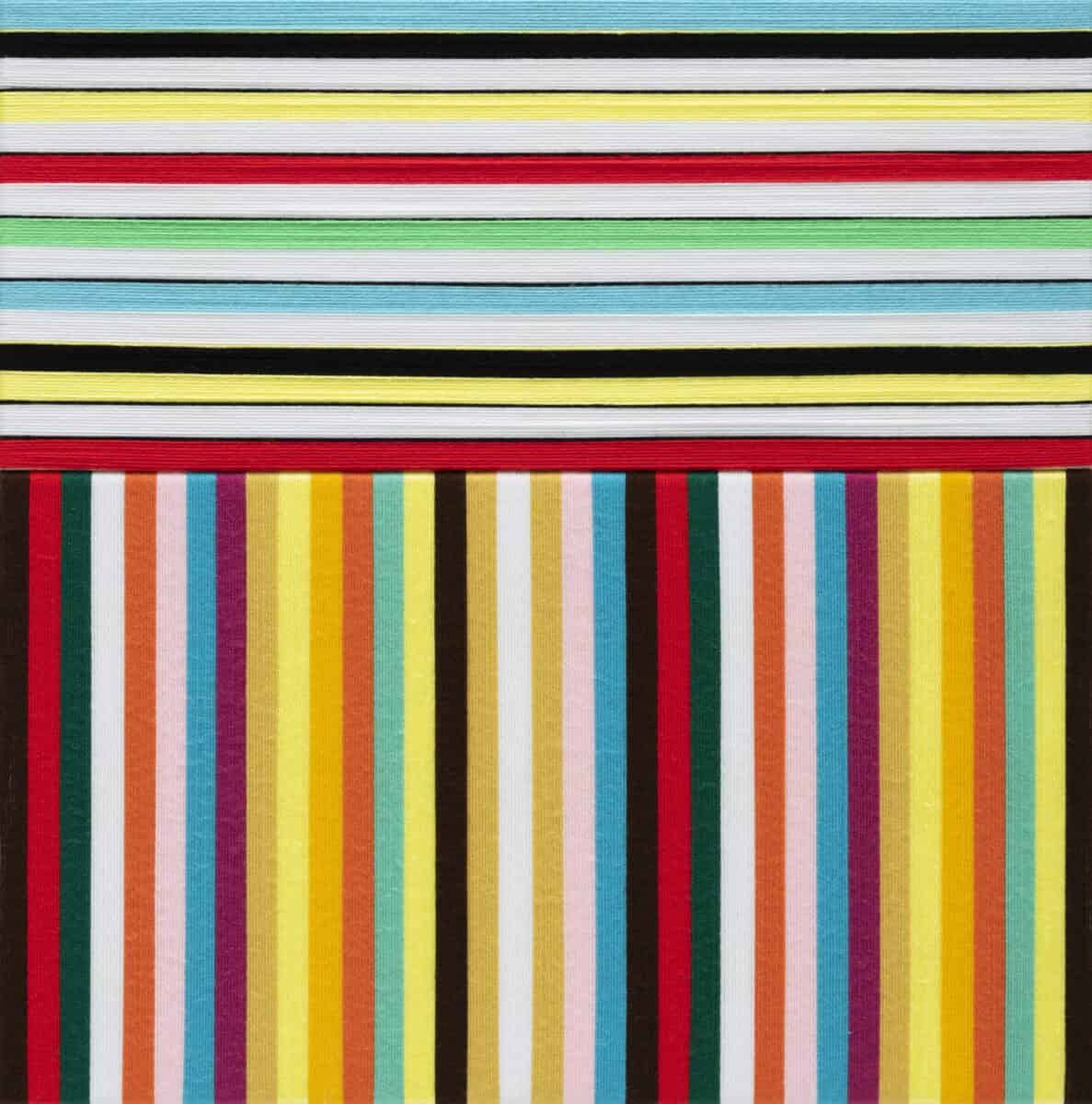
Artadia Awards are designed to provide artists with essential funding and recognition, strengthen their communities, and advocate for pathways to career-building opportunities across the museum and gallery landscape. Each year, the Artadia Awards serve at least 21 visual artists across seven program cities – Atlanta, Boston, Chicago, Houston, Los Angeles, New York City and the San Francisco Bay Area – whose merits demonstrate they have reached pivotal moments in their practice, with consideration for the support these artists need to thrive and succeed, regardless of background. Awards are unrestricted, allowing artists to use the funds however they choose.

The show’s artists examine the social, political and cultural environments in which we all live.
Thea Djordjadze creates sculptures and installations of singular, idiosyncratic poetry. Her works are suffused with multiple art-historical references and are characterized by tensions between material and form. Untitled (2010) elliptically refers to an architectural element – a plinth, a pedestal or the corner of a room – an open wooden structure that lets the viewer experience the work via a physical approach.
Lucy Dodd’s practice explores the possibilities of painting as mythical language and radical symbolic theater. Her use of raw materials like unmixed pigments and organic compounds imbues Dodd’s paintings with spiritual energy and effulgence. Shield 6 (2015) presents both an unconventional shape and positioning of the canvas, which is hemmed with a bright, green-tinted band of canvas framing the work Dodd understands painting as an organic entity that is echoed in her choice of materials, wholly embracing the phenomenal possibility of transformation. Following the same metaphorical thread, Shield 6 holds both pigments and phosphorescents within itself, providing time as a counterpart for the painting to transform between two ends of light and darkness – under light, resonating a lush green evocative of plant life; in the dark, radiating a luminescent glow.
Karen Kilimnik, one of the most important representatives of figurative painting, sculpture, video and installation in the last four decades, continues to produce work that is as wide-ranging as it is groundbreaking. The beach and the sea (2022) is indicative of Kilimnik’s lush style of painting that achieves a feeling of cheeky opulence via bold colors and velvety brushwork. A deep blue horizon marks a border in a deserted setting, with a view of the sky, sand and sea shaded in pastel blues beyond.
Kilimnik’s refined use of medium and penchant for fantasy are apparent, as is her playful approach to style and substance.
Barbara Kruger’s 2011 series of text-based editions, which each pose a fundamental philosophical or ethical question, is thus emblematic of the artist’s practice not only visually but also conceptually. Untitled (Are there animals in heaven?) addresses the viewer in stark white letters, outlined in black, atop a vibrant colored and patterned background. As ever, the aim is not to find explicit answers, but rather to encourage reflection upon one’s own reactions to the artist’s bold inquiries. Regardless of politics,
religion or worldview, Kruger’s questions challenge viewers to think clearly, critically and emphatically.
Louise Lawler, who ranks among the trailblazing female artists associated with the Pictures Generation, explores the presentation of artwork and the circumstances in which it is viewed. Her practice of photographing works of art, usually in situ at museums, auction houses or private homes, moves beyond documentation. Rather, it functions as a conceptual tool and way of directing attention to tacit and unspoken things – the constraints, rules, and economies of the loose system that governs the art world. In Lawler’s aptly named series Three Sizes in Twelve Colors (1994/2019), the artist revisits one of her earlier images, It Could Be Elvis (1994), by transferring it to different formats and colors. Each size (S/M/L) has twelve variants that each, in turn, shifts in hue, thereby covering the full spectrum of the color wheel. A vital aspect of Lawler’s process, the continuous re-presentation and recontextualization of existing images, demonstrates the discerning and relational character of her art.
Pamela Rosenkranz rose to prominence with a conceptual practice that encompasses sculpture, video, installation and painting. Her work questions the subjective element in the apprehension of an artwork, shifting the viewer’s focus toward the material, biochemical and neurological determinants of human behavior. I Wish I Could Cry Blood (Stare Circle) (2021) demonstrates Rosenkranz’s exploration of our current Internet-driven and image-saturated times. The watermarked stock photo of an eye, coated in thin layers of semi-transparent pink paint – a color Rosenkranz often returns to and that references human tissue – probes into the viewer’s relationship to familiar images, highjacked and branded for commercial purposes. Her monumental sculpture Old Tree, which raises questions about the real and the breakdown of the boundary between nature and artifice, was selected for the third High Line Plinth commission and is to be unveiled later this spring.
Analia Saban has worked for nearly two decades examining the ways in which we understand works of art, and particularly how content and value are conveyed via artistic media. Pressed Paint (Titanium White) (2017) illustrates the artist’s continual questioning of what constitutes a painting, sculpture or, in this case, a print. Produced as a multiple, but each unique, Saban’s Pressed Paint works comprise linen “sacks” whose interiors are filled with acrylic paint, which is then run through a printing press so that the pigment seeps downward, permeating the linen canvas. The object thus both confuses and transcends its existence as a print.
Rosemarie Trockel is widely regarded as one of Germany’s most important and influential conceptual artists. Central to Trockel’s work is a feminist viewpoint that has proven singular and sustained, flexible and pithy, when employed as a tool for cultural analysis. Through her varied practice, Trockel explores social convention and stereotyping as vehicles for disguise. In Some Know Better (2023), Trockel returns to one of her iconic wool works of the same title: a colorful striped composition with contrasting vertical and horizontal stripes. Pattern is a Teacher (2019) is a photo of another earlier wool picture, Day Release (2017), taken in the artist’s studio. Commenting upon established artistic hierarchies and outdated gender roles, her wool thread pictures make use of wool as a material for ‘painting’. The wool works exemplify Trockel’s contribution to the discourse around painting, and with references in composition and palette to the male-dominated world of twentieth-century abstraction and Minimalism, she at once evokes and subverts the medium.
The exhibition is underpinned by both organizations’ current and historical steadfast support of artists, many of whom have made or are continuing to make abiding and original contributions to the conversation around contemporary art. Sprüth Magers x Artadia highlights the gallery’s ceaseless commitment to fostering long-lasting careers and its interest in engaging in the communities surrounding its artists, who individually challenge ideas around gender in the world of art and the world at large.
Sprüth Magers x Artadia, A Benefit to Support the Next Generation of Artists- Thea Djordjadze, Lucy Dodd, Karen Kilimnik, Barbara Kruger, Louise Lawler, Pamela Rosenkranz, Analia Saban and Rosemarie Trockel, April 3rd–April 22th, 2023, Sprüth Magers, NY


